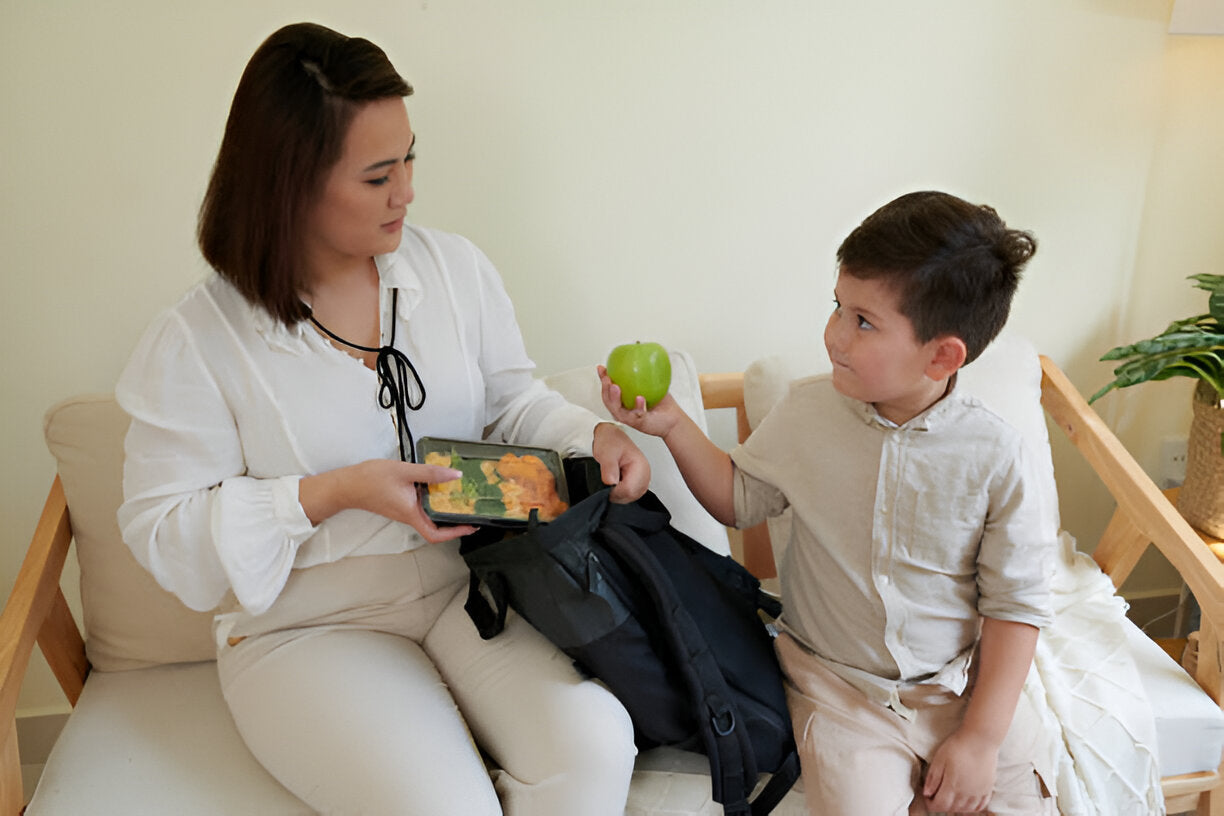
Back-to-School Wellness Habits Parents Should Start Now
“A smooth school year isn’t just about sharpened pencils and fresh notebooks—it begins with healthy routines that nurture your child’s body and mind.”
As summer winds down, families often feel the energy shift. Lazy mornings give way to early alarms, and carefree afternoons are replaced with homework schedules and extracurriculars. This transition can be exciting, but it also brings its share of stress for both children and parents. The best way to prepare isn’t just through checklists or shopping trips, it’s by focusing on wellness habits that support children from the inside out.
From sleep and nutrition to emotional resilience and daily routines, the choices you make now will echo throughout the school year. Let’s explore how you can set your child up for success with small but powerful back-to-school wellness habits.
Resetting Sleep Patterns Before the First Bell
One of the most overlooked yet essential wellness foundations is sleep. Over summer, kids often drift into later bedtimes and irregular routines, but once school starts, that flexibility disappears. Instead of forcing a sudden shift the night before school begins, parents should gradually bring bedtime and wake-up times back on track. Moving the schedule earlier by just fifteen minutes every few nights allows the body to adapt naturally.
Creating a consistent bedtime routine also helps signal to children that it’s time to wind down. That could mean reading together, dimming lights, or practicing quiet breathing exercises. Equally important is limiting screen exposure before bed, since blue light interferes with melatonin production and delays sleep. Well-rested children show better focus, improved moods, and sharper memory, all crucial for learning.
Morning Routines That Create Calm
Mornings often set the tone for the entire day. A rushed, chaotic start can leave kids feeling anxious before they even arrive at school, whereas a steady, predictable routine creates confidence and calm. Parents can make mornings smoother by planning ahead the night before: laying out clothes, prepping lunches, or even reviewing schedules together.
Breakfast should be non-negotiable. A balanced morning meal—think whole grains, protein, and fresh fruit, gives children the energy to stay alert through the first half of the school day. Some families also find value in beginning the morning with a few moments of gratitude or mindfulness. Even two minutes of deep breathing can shift the entire household’s mood from rushed to grounded.
Strengthening the Immune System with Nutrition
When school resumes, so do runny noses and the spread of seasonal germs. That makes immune health a top priority. Nutrition plays a powerful role here. Building meals around whole foods like colorful vegetables, lean proteins, whole grains, and healthy fats ensures children get the nutrients they need. A lunchbox filled with variety—crisp carrots, apple slices, nut butter sandwiches, or yogurt—gives steady energy while supporting immunity.
Hydration often gets overlooked, but it is just as important. Sending children to school with a reusable water bottle encourages them to drink consistently, preventing the fatigue and poor focus that come from dehydration. Supplements can also support wellness by filling gaps in daily nutrition, especially when they include essentials such as vitamin C, vitamin D, zinc, and omega-3 fatty acids. These nutrients contribute to immune defense and healthy brain development, both vital during the school year.
Movement Beyond the Playground
Children are naturally active, but once school resumes, long hours of sitting in classrooms can limit physical movement. Encouraging daily activity outside of school hours keeps their bodies strong and their minds sharp. It doesn’t have to mean organized sports or formal workouts, playing in the backyard, biking to school, or taking an evening family walk all count.
Experts recommend at least an hour of activity per day for school-aged children. Physical play not only supports healthy growth but also reduces stress and anxiety, making it an important part of overall wellness. Framing exercise as fun rather than a chore helps children develop a lifelong love of movement.
Caring for Mental and Emotional Health
Returning to school brings excitement, but it can also trigger worry or stress. Younger children may experience separation anxiety, while older ones may feel the weight of academic and social pressures. Parents can support their children by creating space for open conversations. Instead of asking generic questions like “How was your day?” try inviting more specific dialogue with prompts such as, “What was the best thing that happened today?” or “Was anything challenging?”
Children also benefit from seeing how adults manage stress. When parents model healthy coping strategies like journaling, deep breathing, or going for a walk, children learn to use similar techniques. Downtime matters too. With so many after-school activities competing for attention, carving out quiet moments at home helps prevent burnout.
Building Strong Eating Habits
Busy school days often tempt families to rely on quick fixes, but consistency in healthy eating is critical for long-term wellness. Establishing meal prep routines can make the week smoother. For instance, chopping fruits and vegetables on Sunday or pre-packing snacks ensures better choices during hectic mornings.
Involving children in food preparation is another powerful habit. When kids help assemble their lunchbox, choosing between grapes or strawberries, for example, they feel empowered and are more likely to eat what’s packed. Evening family dinners round out the day by not only nourishing the body but also creating opportunities for connection and conversation.
Hygiene as a Daily Habit
Hand hygiene may seem simple, but it remains one of the most effective ways to keep children healthy. Reinforce the habit by practicing at home—washing hands with soap and warm water for at least twenty seconds before meals and after returning from school or play. Packing a small bottle of hand sanitizer is helpful for moments when soap isn’t available. Children who see parents prioritizing hygiene are more likely to make it second nature themselves.
Setting Boundaries Around Screen Time
Technology plays a larger role in learning than ever before, but too much recreational screen time can interfere with sleep, physical activity, and even social skills. Setting reasonable limits before the school year begins helps establish balance. For instance, designating bedrooms and dinner tables as screen-free zones encourages better rest and family connection. Replacing excessive screen time with alternatives like reading, board games, or creative projects allows children to engage their minds without overstimulation.
A Homework Space That Encourages Focus
Wellness isn’t limited to the body; it also extends to a child’s learning environment. Creating a homework-friendly space at home helps children focus and reduces stress. A quiet, well-lit area free from distractions like television provides the structure kids need to work productively. Pairing this with short breaks for stretching or hydration keeps energy levels steady. When children know they have a reliable place to study, they feel more confident approaching academic challenges.
Final Thoughts
Back-to-school season doesn’t have to feel overwhelming. By introducing healthy habits before the school year begins, parents can ease the transition and give children the tools they need to thrive. From resetting sleep schedules and supporting immune health to fostering emotional resilience and balanced routines, these practices set the stage for a successful year.
At Orthomol USA, we believe wellness is the foundation of learning and growth. By prioritizing nutrition, activity, rest, and mindfulness, families can navigate the school year with strength and balance. Start small, stay consistent, and watch how these habits help your children flourish, not just academically, but in every part of their lives.




